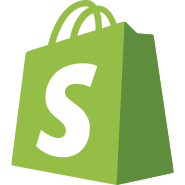Growing A Kayaks & Outdoor Gear Company to $100k/mo
Hello! Who are you and what are you working on?
Hi, I'm Hamish from Bay Sports. We offer a wide range of Kayaks, Stand Up Paddle (SUP) Boards, Inflatable Air Pontoons, Surf Skis and growing. We started with just kayaks, and branched out to become a more holistic online water sports business.
Australia is such a outdoors and active country, being water locked and also thousands of rivers, estuaries, lakes and more all throughout the land. Our ethos from the start was to deliver the most affordable, high-quality watersports products online, delivered to your doorstep.
Kayaking is especially popular in recent years, as it's a great low-intensity way to keep fit and active, without doing your joints damage. Fishing kayaks, Sea & Touring Kayaks and Family Recreational kayaks are our most popular and in demand items, and especially our new range of rigid inflatable SUP boards. Check out our video we made up on Lizard Island on the Australian Great Barrier Reef.
Being able to run the business online via Shopify has allowed us to...

Download the report and join our email newsletter packed with business ideas and money-making opportunities, backed by real-life case studies.

Download the report and join our email newsletter packed with business ideas and money-making opportunities, backed by real-life case studies.

Download the report and join our email newsletter packed with business ideas and money-making opportunities, backed by real-life case studies.

Download the report and join our email newsletter packed with business ideas and money-making opportunities, backed by real-life case studies.

Download the report and join our email newsletter packed with business ideas and money-making opportunities, backed by real-life case studies.

Download the report and join our email newsletter packed with business ideas and money-making opportunities, backed by real-life case studies.

Download the report and join our email newsletter packed with business ideas and money-making opportunities, backed by real-life case studies.

Download the report and join our email newsletter packed with business ideas and money-making opportunities, backed by real-life case studies.



























